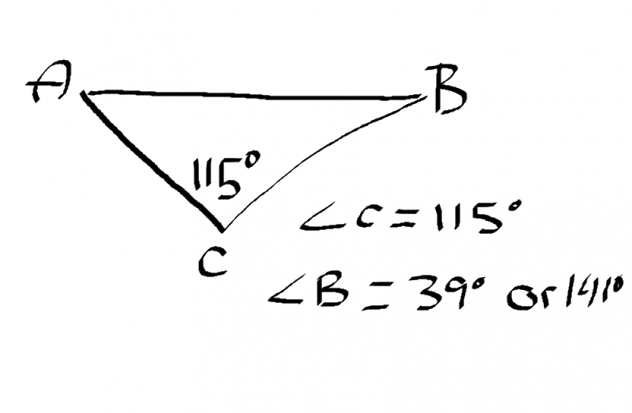
Hey there, thanks for coming back to my blog!! This week in Pre Calculus 11 we learned two very important formulas that will make solving triangles so much easier. I am so thankful that I learned how to use this. If you stay tuned you too, will learn the secrets of trigonometry. Super helpful, keep reading.
Mathematicians are very organized and you will see them use CAPITAL LETTERS, the Theta symbol (), small case letters, and x’s now and then
- The capital letters in a triangle will represent each angle of a triangle.
- (
) which will represent the unknown angle.
- small case letters will represent the sides of the triangle. Neat enough the small letter represent the opposing side of the big letter.
- X represents the unknown angle or side length.
This is the Sine law
- If you are looking for a side length it is easier to put the side lengths (small letters on the top. You can reciprocate the whole Sin law if you are looking for an angle.
EXAMPLE: Triangle ABC
Find the side length of AB (also known as c)
Step 1: Find the given angles and side lengths
- AB (c) = x
- BC (a) = unknown
- AC (b) = 5.0 cm
Step 2: Fill in the Sine Law
Step 3: Find out which equation to use
We need side c, and we have the numerator and denominator of
. So we can use…
Step 4: Solve for c
- x = 2.5 cm
Final Answer: Side AB (side c) = 2.5cm
Trying to find an Angle using Sine Law.
Steps:
- Use the reciprocated version of the Sine Law
- Find the given angles and side lengths
- Fill in the Sine Law
- Find which equation to use
- Solve
- To get theta (
) by itself you have to use inverse sine (2nd function sine)
- Check which quadrants they are in to make sure that you get the correct angle.
Example: Find Angle B
Step 1: Use the reciprocated version of the Sine Law
Step 2: Find the given angles and side lengths
- AB (c) = 10 cm
- BC (a) = unknown
- AC (b) = 7.0 cm
Step 3: Fill in the Sine Law
Step 4: Find which equation to use..
I have enough information to use .
Step 5: Solve
- B=
Step 6: Check which quadrants they are in to make sure that you get the correct angle.
This means that can be in either Quadrant 1 or 2 Because it will be positive where All and Sine is.
The reference angle in both Q1 and Q2 would be
The rotation angle in Q1 would be…
- 0 + 39 =
The rotation angle in Q2 would be…
- 180 – 39 =
can either be
or
But since and exceeds the maximum amount a triangle can be with all three angles added together to make
and not
This is how you would use the Sine Law in Trigonometry




